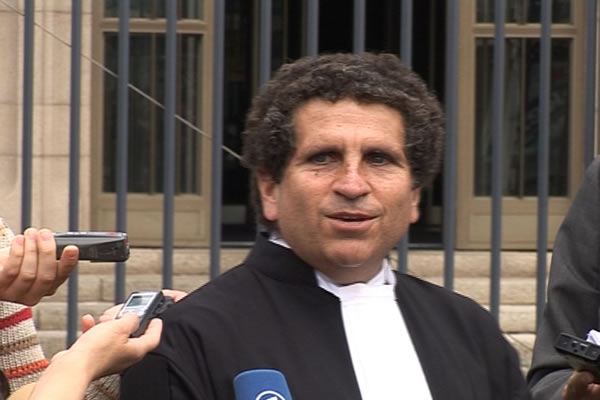Home
HOLBROOK’S ‘DIPLOMATIC SLEIGHT-OF-HAND’
In July 1996, at the talks in Belgrade on the removal of Radovan Karadzic from political and public life, Richard Holbrook led Momcilo Krajisnik and Aleksa Buha to believe that Tribunal in The Hague would simply ‘disappear’ after the elections held in BH in September 1996
 Peter Robinson, pravni savetnik Radovana Karadžića
Peter Robinson, pravni savetnik Radovana Karadžića At a press conference on Monday American lawyer Peter Robinson told the reporters he filed a motion to drop the charges against Radovan Karadzic, because of an immunity agreement with Richard Holbrooke. Robinson also noted that the defense had 15 witnesses ready to confirm that the agreement existed. The ‘key evidence’, Robinson said, is a confidential dispatch sent by the US ambassador in Sarajevo on 22 July 1996; the dispatch was unclassified in April 2009 and delivered to the defense team. The dispatch is attached to Karadzic’s motion in Annex F.
In the dispatch, Ambassador John Menzies informs the State Department about a conversation he had that day at Pale with Momcilo Krajisnik, Assembly speaker, and Aleksa Buha, foreign minister of Republika Srpska. The conversation revolved around the implementation of the agreement to eliminate Karadzic from political and public life. That agreement was reached three days earlier in Belgrade after the negotiations involving Holbrooke, Milosevic, Krajisnik and Buha. The US ambassador insisted on the removal of Karadzic’s posters from all public places, demanding that Karadzic be addressed not as ‘president’ but as ‘doctor’ or ‘former president’.
In that conversation, Krajisnik and Buha didn’t speak about any immunity from persecution based on the indictments issued by the Tribunal against Karadzic. Krajisnik and Buha say that Holbrooke ‘led them to believe’ that the war crimes tribunal would continue to exist ‘until the September election in BH’ and would then ‘disappear’. Krajisnik complains that a number of ‘very destructive’ statements had led to him and Buha being vilified in the Republika Srpska public because of that agreement. Also, Krajisnik contends, he agreed with Holbrooke that there would be no public mention of the Tribunal, and that after elections it would ‘simply disappear’.
According to the dispatch, Ambassador Menzies told Krajisnik he ‘doubted any such agreement could have been reached’, that ‘only the Tribunal can speak for the Tribunal’, and finally that the US administration will ‘continue to support the Tribunal’s activities’. This could hardly be interpreted as proof of an immunity agreement or ‘the disappearance of the Tribunal’.
Ambassador Menzies’s dispatch challenges yet another key argument presented by Karadzic and his legal advisor: that Holbrooke negotiated in Belgrade ‘on behalf of the international community’. In their statements in April 2009, contained in Annexes D and F to the defense motion, Krajisnik and Buha claim they ‘believed’ or ‘had the impression’ that Holbrooke concluded the agreement ‘on behalf of the international community’.
According to the diplomatic dispatch, on 22 July 1996, three days after the Belgrade negotiations, Krajisnik and Buha complained to Ambassador Menzies that they ‘no longer know who in fact speaks for the international community’: Carl Bildt as the high representative in BH, Robert Frowick as the head of the OSCE mission, or Richard Holbrooke who at that time wasn’t part of the US administration in Washington but was a banker based in Boston. As Holbrooke explains in his book, the administration reactivated him in July 1993 and sent him on a mission to eliminate Karadzic from political and public life, in order to eliminate the pressure to conduct a risky operation to arrest Karadzic. He was given only one instruction: to ‘do something with the aid of his old creative ambiguity’. Apparently, that is precisely what he did.
Linked Reports
- Case : Karadzic
- 2009-05-25 KARADZIC’S MOTION ON THE ‘HOLBROOK AGREEMENT’
- 2009-05-08 KARADZIC PAYS THE PRICE FOR HIS CHOICE
- 2009-05-06 CLEARING UP THE GROUND FOR KARADZIC TRIAL
- 2009-05-27 ALL THE PRESIDENT'S MEN
- 2009-06-03 KARADZIC WONDERS WHY HE HAS BEEN INDICTED DESPITE SO MUCH EXCULPATORY EVIDENCE
- 2009-06-11 LORD OWEN ‘RELUCTANT’ TO TESTIFY FOR THE PROSECUTION
